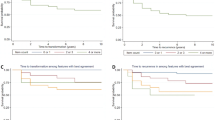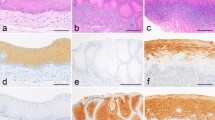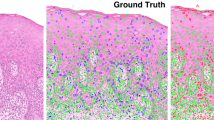Abstract
In a retrospective survey of 235 cases in which the diagnosis on biopsy was lichen planus, keratosis or leukoplakia, the histological features were re-assessed in as objective a manner as possible. For each case, the tissue changes were recorded under 37 headings, without any attempt at interpretation. The information was then transferred to punched cards, and used for various types of computer-aided analysis. Firstly, the frequency with which each tissue change occurred was assessed for each diagnostic group, and the data presented also show how often each change occurred in those cases that subsequently developed a carcinoma.
Re-analysis of the cases on the basis of short lists of tissue changes that were thought to characterize each diagnostic category showed, as expected, that many other factors must have played a part in the original diagnosis.
Analysis of the histological findings on an objective basis, using a cluster analysis programme, provided an encouraging degree of separation into the diagnostic groups. When a number of known carcinoma cases were included in the cluster analysis as “markers”, a small number of leukoplakia and keratosis cases were placed by the computer into the same cluster as these “markers”. Of the original 187 cases originally diagnosed as leukoplakia or keratosis, 4.8% are known to have developed a carcinoma, but of the 11 cases the computer placed in the same cluster as the “marker” cases of carcinoma, 36% have subsequently developed carcinoma. Thus, in the cluster analyses, the computer is tending to “recognize” those cases that later developed carcinoma, and to separate them from the bulk of the cases in which malignant change has not occurred.
This is a preview of subscription content, access via your institution
Access options
Subscribe to this journal
Receive 24 print issues and online access
$259.00 per year
only $10.79 per issue
Buy this article
- Purchase on Springer Link
- Instant access to full article PDF
Prices may be subject to local taxes which are calculated during checkout
Similar content being viewed by others
Rights and permissions
About this article
Cite this article
Kramer, I., Lucas, R., El-Labban, N. et al. A Computer-aided Study on the Tissue Changes in Oral Keratoses and Lichen Planus, and an Analysis of Case Groupings by Subjective and Objective Criteria. Br J Cancer 24, 407–426 (1970). https://doi.org/10.1038/bjc.1970.49
Issue Date:
DOI: https://doi.org/10.1038/bjc.1970.49



